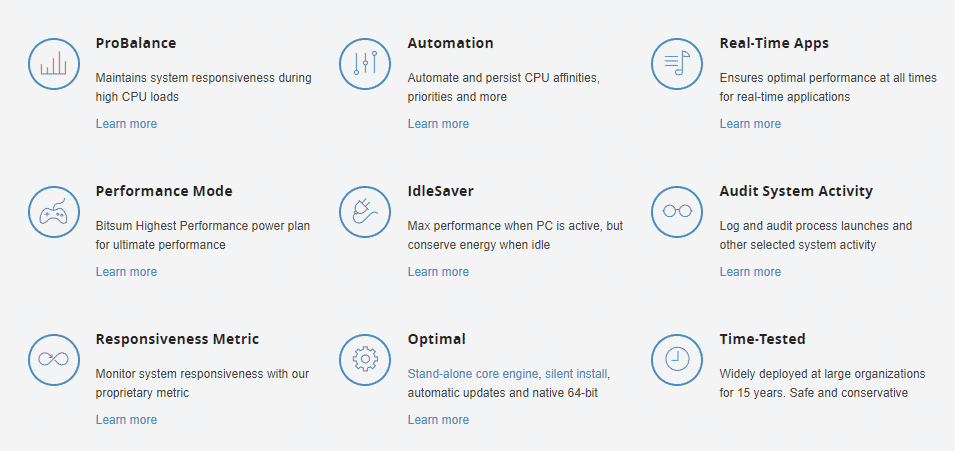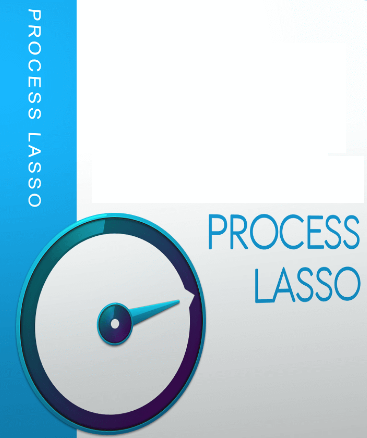

We then dive deeper into the Lasso implementation itself – which demonstrates how blockchain engineers and other developers can use and build on this tool today.īecause many blockchain nodes verify and record every transaction, running computations on a blockchain can be extremely expensive.
#Programs like process lasso plus
So in this post, we share a brief primer on why SNARKs and zkVMs matter, plus some of the motivations and concepts behind Lasso and Jolt, along with key improvements and performance benchmarks.

Together these allow SNARKs for existing popular programming languages – not only those designed for the task. In short: Lasso introduces a streamlined zkVM approach, avoiding tedious hand-optimized circuits by performing lookups against massive structured tables with less waste and Jolt-based VMs are simple, fast, and easily auditable. With Jolt, it will be easier for developers to write fast SNARKs in their high-level language of choice. Relative to existing zkVMs, we expect Jolt to achieve similar or better performance – and importantly, a more streamlined and accessible developer experience. Jolt realizes the “ lookup singularity ” – a vision initially laid out by Barry Whitehat of the Ethereum Foundation for simpler tooling and lightweight, lookup-centric circuits (more on why this matters below). The second, accompanying innovation to Lasso is Jolt, a new approach to zkVM (zero knowledge virtual machine) design that builds on Lasso.We invite the community to help us make Lasso as fast and robust as possible.

To demonstrate, we’re releasing the open source implementation, written in Rust. Our initial implementation provides roughly a 10x speedup over the lookup argument in the popular, well-engineered halo2 toolchain we expect improvements of around 40x when optimizations are complete.
Lasso is a new lookup argument (more on this below) with a dramatically faster prover. The techniques described across the Lasso and Jolt papers represent a significant evolution from previous work. To address these issues and accelerate progress in the space, two new innovations, Lasso and Jolt, present a fundamentally different approach to SNARK design – one that is not only faster but potentially easier for developers to reason about and build on. Because for web3 builders, SNARKs can unlock compute-intensive applications, allowing many more kinds of applications to be built than are possible now. But misconceptions and uncertainties about their performance, security, and need for specialized, often intensive engineering efforts still threaten the long-term adoption of this important technology. SNARKs (Succinct Non-interactive ARgument of Knowledge) in particular have come far. While many theoretical applications have been proposed, they’re limited in practice by the efficiency of existing techniques. Over the last few years, extensive research has gone into increasing the efficiency and usability of verifiable computing to deliver on the promise of trustless, distributed systems, and to address a critical barrier in web3 today: helping blockchains scale. You can also watch explainers on the lookup singularity and new ways to think about SNARK design. Or find the research papers for Lasso and Jolt, respectively. Together, they represent a fundamentally new approach to SNARK design, improving on the performance of widely deployed toolchains by an order of magnitude or more providing a better, more accessible developer experience and making auditing easier.įor an in-depth introduction to these technologies, along with insight into their technical evolution, see this post authored by a16z crypto research partner Justin Thaler. Editor’s Note: In this series, we’re sharing two new innovations that can significantly speed up scaling and building applications in web3: Lasso and Jolt.







 0 kommentar(er)
0 kommentar(er)
